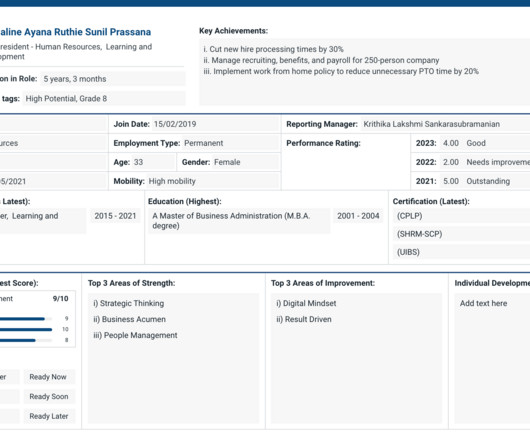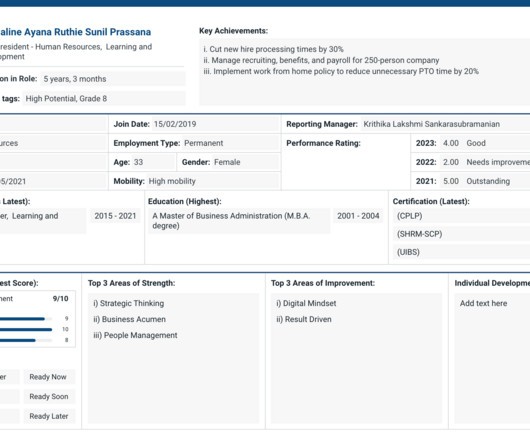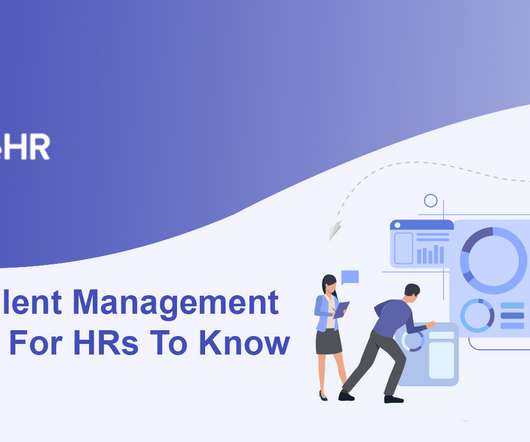How to Develop a Staffing Planning (With Staffing Plan Example)
Analytics in HR
JULY 31, 2023
Used as a model, a staffing plan is a detailed illustration of the organization’s talent pool. It highlights the roles needed in each business unit, the required skills and competencies, succession planning, staffing budget, and ongoing development. Hiring the right people for the right roles can’t be overstated.





























Let's personalize your content